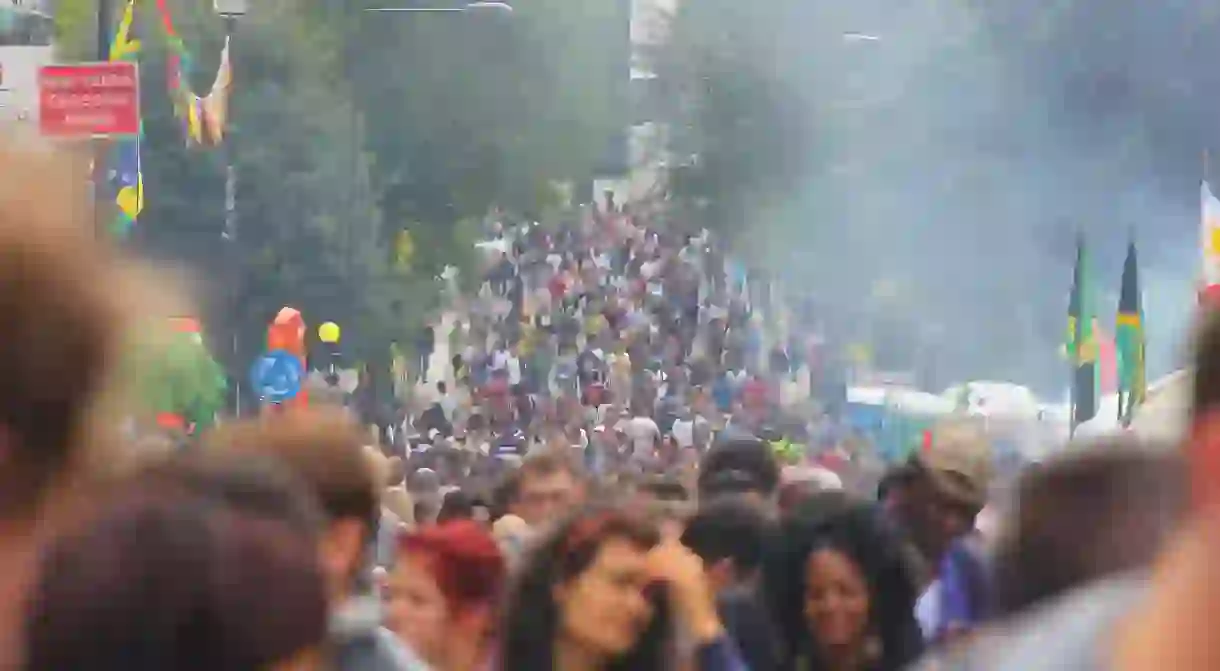A Literary Tour of London: Colin MacInnes' Notting Hill

‘Latimer Road I particularly want you to remember, because out of this road, like horrible tits dangling from a lean old sow, there hang a whole festoon of what I think must really be the most sincerest highways in our city.’
MacInnes’s ‘London Trilogy’, City of Spades, Absolute Beginners and Mr Love and Justice, documents a vibrant time for post-war London, a city which changed and grew with the unprecedented levels of immigration. In City of Spades, MacInnes depicted a city within a city or as the novel’s subtitle describes, ‘London street life from the inside out’. It was in Absolute Beginners, however, that MacInnes’ second hero, his unnamed photographer narrator chooses to live a bohemian lifestyle in the area he comes to term ‘Napoli’, his exotic and affectionate way to describe Notting Hill.
As the Latimer Road extract shows, there is a real ambivalence and tension contained as much within the descriptions of Notting Hill in this novel as there are in the actual place itself. Notting Hill resists a singular identity. In fact, as the Grenfell disaster has illustrated, there are two very different sides to the area which, though physically close to each other, are a world apart in many other ways. It is now known for its exuberance each year at the end of August at Carnival, yet what Grenfell reminded us of is the inequality still rife in the area.

This teenager gives a lengthy description of the geography of ‘Napoli’ that ties in with what makes it such a cultural phenomenon. In the centre of London, it ‘quite a curiosity’ as it is ‘left behind by the Welfare era and Property-owning whatsit’. North of Napoli is the Harrow Road and Kensal Rise, ‘which you’d hurry through even if you were in a car’; on the east lies ‘a park with a name only Satan in all his splendour could have thought up, namely Wormwood Scrubs’; to the south, by W11, lies somewhere ‘a little bit different, but in a way that makes them somehow worse’ owing to the pocket of extreme wealth in Kensington that the ‘smart work’ of the estate agents created. This area serves as the beating heart of London for the teenage hero whose parents – a cuckolded and ailing father and cuckolding and unfeeling mother – live in the more southerly Pimlico. One may be a familial home, but Notting Hill, the ‘residential-doss house’ of the city, becomes a spiritual one.
Though Colin MacInnes is not usually ranked amongst the reactionary literary group led by Kingsley Amis known as the Angry Young Men, his London novels document that portion of society that sits on the extreme, that clashes with the establishment. In this spirit, the most appropriate way to explore Colin MacInnes’ Notting Hill is through his depiction of the 1958 Notting Hill Riots we see in Absolute Beginners. The book was so well-loved as a snapshot of a spirit of the age that a (much less well-loved and acclaimed) film was made, famously soundtracked by David Bowie.
The account of the riots begins in the narrator’s grimy flat. From his window he observes an assault upon a Sikh by a ‘group of yobbos’. What strikes the teenager is that ‘the whole thing was so meaningless’, there was no reason for this attack. Trying to compute what has just happened, he goes out into Napoli to see what unfolds. Outside his flat, a white woman and a black woman collide their prams and a ruckus ensues. He hops on his bike, cycles along slowly, ‘prospecting’, acting as the camera documenting what is about to happen. He comes across a lone black child who is met by incensed hoards at Latimer Road Railway Station. It is only the shrieks of ‘Lynch him!’ which force him to run. From this point, our narrator can take no more and seeks refuge in Wormwood Scrubs, that hellish park. He visits BBC studios down Wood Lane and wishes to tell what he has seen to ‘all the millions’. But, sadly, he will not be able to and he returns back into the heat via White City station, after a fight of his own in Blenheim Crescent.
In the first three quarters of the novel, the narrator goes about untroubled in his bohemian, rootless life, visiting his parents when he needs to eat, going to jazz bars, clubs and living any which way he wishes. Yet one of the darkest episodes of London history confronts him in the final section of the novel, when racially-motivated attacks upon the 6000 or so ethnic minorities in Notting Hill snowball and become a national occurrence. The freedom of movement the teenager experiences up until that point is slowed and halted. When he chooses finally to leave the area and seek refuge at home in Pimlico, he arrives at Shepherd’s Bush Green tube station at the edge of Notting Hill. He is amazed to notice that ‘inside the two square miles of Napoli, there was blood and thunder, but just outside it…you were back in…England’s green and pleasant land’. Like with Grenfell, the race riots became a mediatised bubble which drew crowds and national attention, but seemed ultimately to not touch those who it needed to most: those ignorant of the injustice in Notting Hill itself.













